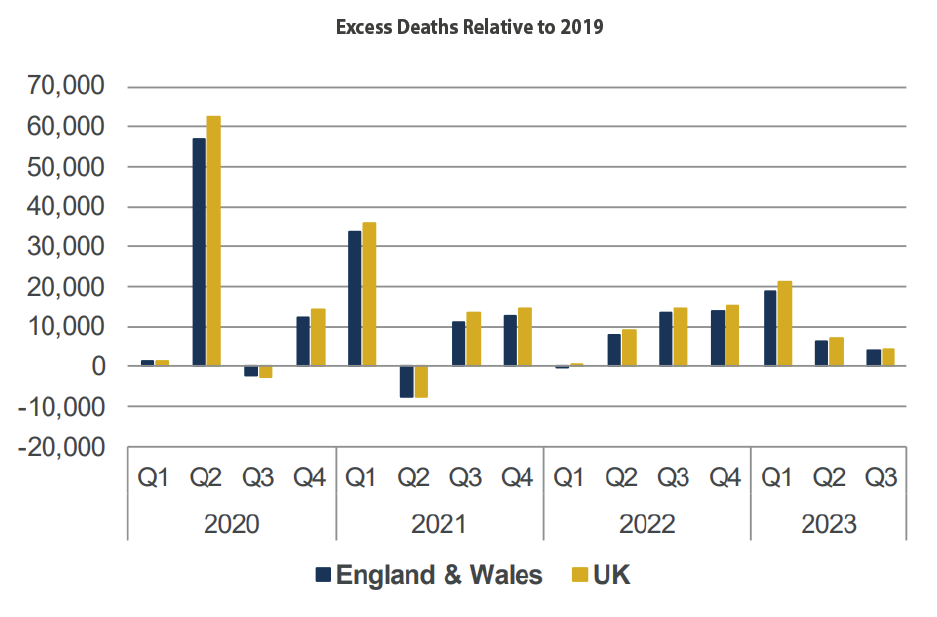
By Michelle Galpin at BWCI
michelle.galpin@bwcigroup.com
“the excess deaths,
relative to the number expected,
has increased”
In the previous edition of Bandwagon we highlighted the emerging trend, which was identified in the second quarter of 2022, of the increasing number of “excess deaths”, relative to those expected based on the rates of mortality experienced in 2019.
Mortality rates vary with age and gender, so in order to calculate the expected number of deaths in a particular population over a particular period, we need to know the demographic profile of that population.
Historically, accurate data about the composition of the UK’s population has only been collected once every 10 years, as part of the census. Therefore, the demographic profile of the population in the intervening years has to be estimated, based on the most recently published census data. This means that it could be up to 10 years out of date.
The last census in England and Wales was carried out in March 2021. However, as it takes some time to analyse the data collected and compile the results, the 2021 census results were not published until 2022.
The CMI’s¹ mortality bulletin for the second quarter of 2023, which covered the period up to 30 June 2023, incorporated data from the 2021 census for the first time. As a result, there have been some updates to the previously published excess deaths for 2020 to 2022. The reason for this is that the estimated population data was different from what was indicated by the latest census data.
The table compares the excess deaths before and after the update for the 2021 census data. In each year the excess deaths, relative to the number expected, has increased and markedly so in 2022.
Excess deaths update
Returning to the underlying trend in excess deaths, what did the second and third quarters of 2023 look like?
There is some better news than earlier in the year; while there were still more deaths than expected, the numbers are lower than in the first quarter of 2023. However, the chart shows that there have been more deaths than expected, relative to 2019 levels for the last 6 successive quarters.
In the first nine months of 2023 there have been 33,200 more deaths than expected, relative to 2019 mortality rates.


Source: CMI
¹ Continuous Mortality Investigation

